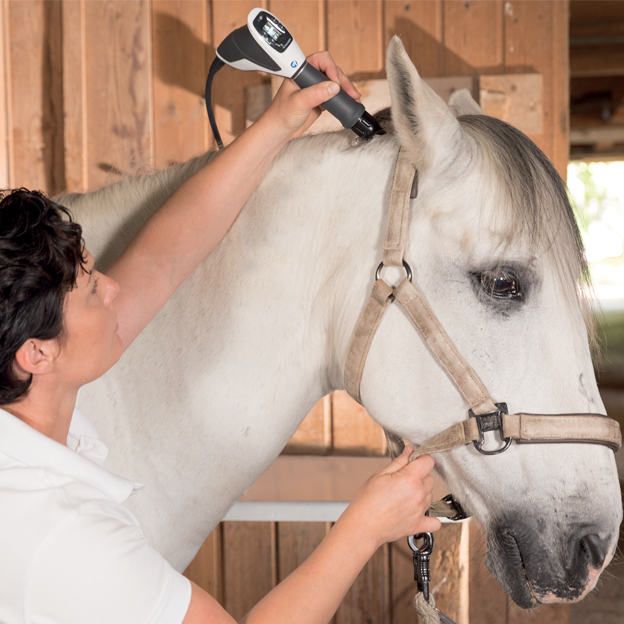Equine Therapy Success Stories: Actual People, Genuine Psychological Improvements
Equine Therapy Success Stories: Actual People, Genuine Psychological Improvements
Blog Article
Laser Treatment in Horse Treatment: A Modern Technique to Improving Horse Health And Wellness
Laser treatment has actually become an essential method in equine treatment, using concentrated light power to promote mobile repair service and speed up healing from a range of ailments. This non-invasive method is especially reliable in managing bone and joint injuries, injuries, and inflammatory conditions, significantly improving total equine wellness. By stimulating mitochondrial activity and increasing ATP production, laser therapy not only enhances flow yet additionally provides substantial pain relief. As this innovative treatment continues to gain grip, it opens up intriguing opportunities for addressing chronic problems like joint inflammation and unguis troubles, signifying a transformative shift in veterinary care. What makes this modality especially compelling?
Comprehending Laser Therapy
Laser treatment, a non-invasive treatment modality, has acquired significant grip in equine medicine due to its effectiveness in advertising healing and discomfort relief. Enhanced ATP levels quicken tissue repair service procedures and decrease swelling, making laser treatment particularly efficient for dealing with musculoskeletal injuries, injuries, and various other inflammatory conditions in equines - Equine Therapy.
There are a number of types of lasers used in equine therapy, each with certain wavelengths and power outputs tailored to different restorative demands. Low-level laser therapy (LLLT), also referred to as cool laser treatment, employs reduced power degrees to boost cell feature without causing thermal damage. High-intensity laser therapy (HILT), on the other hand, uses greater power degrees to attain much deeper cells infiltration and more significant therapeutic impacts.
Veterinarians make use of various laser devices and techniques depending upon the condition being treated and the preferred depth of tissue penetration. Appropriate training and experience are critical for making sure the secure and effective application of laser therapy, thus maximizing its restorative potential while decreasing risks.
Advantages for Equine Wellness


With a solid understanding of how laser treatment functions, it is essential to discover its many benefits for equine health and wellness. By promoting cellular feature, laser therapy promotes faster wound healing and help in the regrowth of broken cells.
Furthermore, laser treatment has been revealed to enhance flow, consequently boosting blood flow to influenced areas. Boosted circulation ensures that crucial nutrients and oxygen are provided more effectively, facilitating the recovery procedure. Furthermore, laser treatment's anti-inflammatory effects aid in minimizing swelling and pain, which is important for the overall wellness of the steed.
Pain administration is an additional significant benefit. By releasing endorphins and obstructing discomfort signals, laser therapy offers efficient, non-invasive relief from both severe and persistent pain. This can add to enhanced mobility and lifestyle for the pet.
Last but not least, laser therapy is a non-invasive treatment choice, decreasing the risk of problems related to even more invasive procedures. Its convenience and efficacy make it a very useful tool in modern equine vet medication.
Usual Conditions Dealt With
Horse practitioners frequently experience a range of problems that can be properly taken care of via laser treatment. Among the most typical are bone and joint problems, consisting of ligament and tendon injuries. Laser therapy speeds up the healing process by improving mobile repair service and minimizing swelling, which is critical for injuries such as tendonitis and suspensory tendon desmitis.
An additional common condition treated with laser therapy is joint inflammation. Furthermore, laser therapy is used in the management of injuries.
Horse respiratory problems, such as persistent respiratory tract obstruction (RAO), additionally respond positively to laser treatment (Equine Therapy). Laser therapy is helpful in treating hoof troubles, including laminitis and abscesses.
Procedure and Safety And Security
Executing laser treatment in equine therapy includes a meticulous procedure to make certain both efficacy and security. The procedure begins with a detailed veterinary evaluation to establish the suitability of laser treatment for the horse's particular problem. As soon as deemed suitable, the therapy location is prepared by cleansing and, if necessary, clipping the hair to enhance laser penetration.
The specialist needs to pick the proper sort of laser, usually a low-level laser (LLLT) or a high-power laser (HPL), depending upon the problem being dealt with. The laser tool is after that calibrated to the suitable wavelength, power, and duration settings. During the application, the specialist moves the laser over the targeted area in the original source a methodical fashion, ensuring consistent and even exposure.
Security procedures are strictly complied with, including making use of protective eyeglasses for both the specialist and the equine. Additionally, it is important to keep an eye on the equine for any type of indications of discomfort or adverse reactions throughout the treatment. Post-treatment, the steed is usually offered a duration of remainder to enable the restorative effects to manifest.
Future of Horse Laser Treatment
As improvements in vet medication continue to unfold, the future of equine laser treatment holds substantial promise. Arising technologies and deeper clinical understandings are set to fine-tune and increase the applications of laser therapy for steeds.
Furthermore, recurring research into the molecular and mobile mechanisms of laser recommended you read therapy will likely produce maximized protocols tailored to certain problems, enhancing efficiency and reducing treatment times. Customized therapy strategies based upon hereditary and biochemical markers could come to be a fact, making sure that each steed obtains the most appropriate and efficient care.

Final Thought
Laser therapy in equine therapy represents a substantial innovation in veterinary care, providing a non-invasive solution to enhance equine health and wellness. By boosting mitochondrial task and raising ATP manufacturing, this method successfully promotes mobile fixing, speeds up healing, and provides discomfort relief. Its application spans numerous problems, including bone and joint injuries, wounds, and inflammatory diseases, making it a functional and effective alternative to typical treatments. The future of equine laser treatment guarantees continued technology and enhanced end results for equine health and wellness management.
Report this page